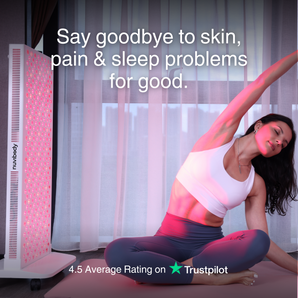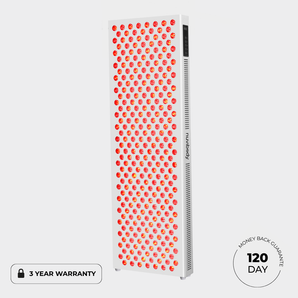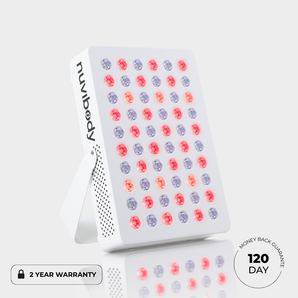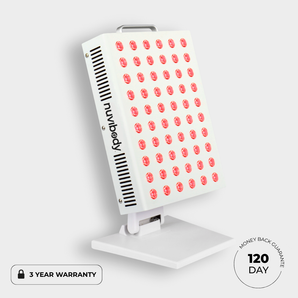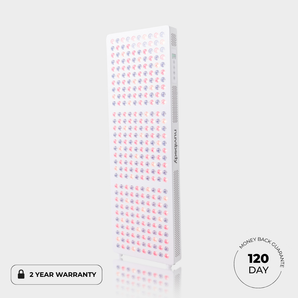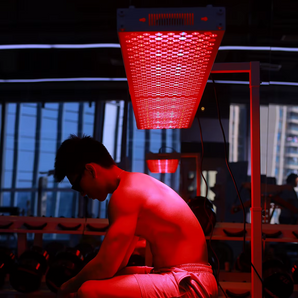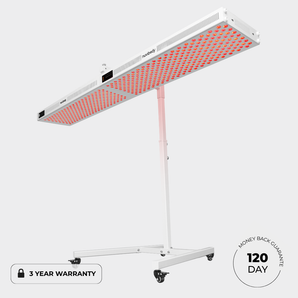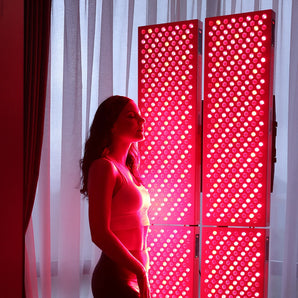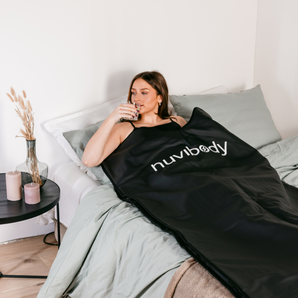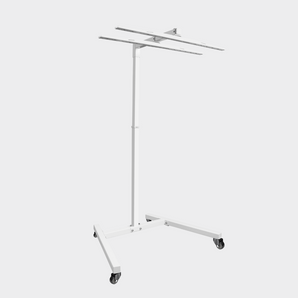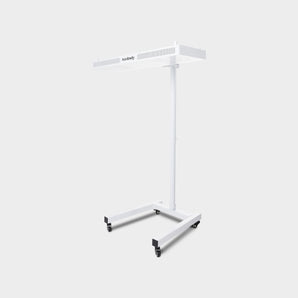Red light therapy is gaining traction in the world of health and wellness. While it is often promoted for skin improvement and muscle recovery, a growing body of scientific research is showing that it can also have positive effects on a wide range of diseases and conditions. But how effective is red light therapy for conditions such as arthritis , lower back pain , or even mood disorders? And how do you properly apply this therapy for the best results? This article explores the role of red light therapy in treating disease and provides insight into the science behind it.
What is red light therapy and how does it work?
Red light therapy uses specific wavelengths of light (between 630 and 850 nm) that stimulate the mitochondria in our cells. Mitochondria are the energy factories of the cell, responsible for the production of ATP, the main energy source for cellular processes. By using red light, these mitochondria can function more efficiently, leading to better cell regeneration, less inflammation, and accelerated healing. The therapy works on both the skin and deeper tissues, such as muscles and joints, and therefore influences various aspects of our health.
Red light therapy for arthritis and joint pain
One of the most researched applications of red light therapy is for joint problems, such as arthritis . Osteoarthritis, a common form of osteoarthritis, in particular benefits from this therapy. Clinical studies show that red light therapy can significantly help reduce pain and improve mobility in patients with this condition. In a double-blind study, in which 50 patients with degenerative osteoarthritis of the knees were treated, it was found that the group that received red and infrared light experienced more than 50% less pain than the placebo group. This led to the conclusion that red light therapy is an effective treatment for pain relief in osteoarthritis of the knee.
In addition to arthritis, red light therapy has also been shown to be effective in relieving pain from other joint conditions. This makes it a valuable option for those struggling with pain, where proper light dosage and consistent use are essential for best results. Regular treatments can help reduce pain and improve range of motion.
Red light therapy for lower back pain
Lower back pain is one of the most common reasons for doctor visits and time off work. The causes can range from muscle strain to more complex conditions such as hernias. Red light therapy offers a non-invasive, safe and effective treatment option. Studies have shown that near infrared light in particular can reduce pain and inflammation in lower back pain. This therapy increases blood circulation and stimulates the body’s natural healing process, resulting in less pain and a faster recovery.
In some cases, red light therapy can even complement other treatments, such as physical therapy, by speeding healing and relieving muscle tension. A quality red light therapy device , such as the one from Nuvibody, offers the ability to perform this therapy at home. With consistent use, users can experience significant relief from their back pain , making their daily activities easier.

Red light therapy for inflammation and wound healing
In addition to treating pain, red light therapy can also play an important role in accelerating the healing process for inflammation and wounds. In inflammatory diseases such as tendonitis or bursitis, red light can help reduce inflammation and improve blood flow, which promotes healing. This makes it a promising treatment for people with long-term inflammation that does not respond well to other therapies.
Clinical research supports the effectiveness of red light therapy in accelerating wound healing and repairing damaged tissue. Stimulating mitochondria contributes to faster cell division and regeneration, accelerating the repair process at the cellular level. This applies to both superficial wounds and deeper tissue damage.
Red light therapy for mood disorders and sleep disorders
Although less well known, red light therapy has also been shown to have an impact on mental health. There is growing evidence that this therapy can help alleviate symptoms of mood disorders such as depression and anxiety. The light can stimulate the production of important neurotransmitters such as serotonin, which can contribute to an improved mood and state of mind.
In addition, red light therapy can also have a positive effect on sleep disorders, such as insomnia. It helps regulate the body’s natural circadian rhythms, which improves sleep quality. This is especially important for people who suffer from stress or work-related sleep disorders. Regular use of red light can have a relaxing effect, leading to a better night’s sleep and a refreshing start to the day.
How do you apply red light therapy for conditions and diseases?
The application of red light therapy varies depending on the condition and the type of device you are using. For most conditions, it is important to choose the right wavelength, intensity and duration of treatment. It is always wise to start with shorter sessions and gradually build up the duration and intensity, depending on your body's response.
A quality red light therapy device , like Nuvibody, provides the right wavelengths and intensity for effective treatment. Many of these devices are designed for home use, so you can be consistent in your therapy. Whether you’re dealing with joint pain, lower back pain , or other conditions, regular use of red light therapy can help you recover faster and have a better quality of life.

The Power of Red Light Therapy for Diseases and Conditions
Red light therapy offers numerous benefits for treating illnesses and conditions. From joint pain to mood disorders, science shows that this therapy can effectively help relieve pain, accelerate healing, and improve well-being. By using the right equipment and settings, you can make the most of this therapy to improve your health.
Curious about the possibilities of red light therapy? Try it yourself and experience the benefits of high-quality devices , such as those from Nuvibody, which are specially designed for effective and safe therapy. Take advantage of our 120-day risk-free trial and discover how red light therapy can improve your health.
Frequently Asked Questions
1. What is red light therapy and how does it work for conditions?
Red light therapy uses specific wavelengths of light (between 630 and 850 nm) to stimulate the mitochondria in the cells. This promotes energy production in the cells, resulting in faster healing, reduced inflammation and pain relief. For conditions such as arthritis or lower back pain, red light therapy helps to relieve pain and improve mobility by accelerating the body’s natural healing processes.
2. Can red light therapy help with arthritis?
Yes, studies show that red light therapy is effective in reducing pain and improving mobility in arthritis, especially osteoarthritis. Research has shown that using red and infrared light can reduce pain in patients with knee osteoarthritis by over 50%, making it a valuable treatment option for those with joint pain.
3. How quickly will I notice an improvement in my pain when using red light therapy?
The rate of improvement can vary depending on the condition and the frequency of treatments. For many people, noticeable pain relief occurs within a few weeks, especially with regular use of the therapy. Consistency is key to achieving the best results.
4. Can red light therapy help with lower back pain?
Yes, red light therapy has been proven effective for lower back pain, specifically by reducing inflammation and increasing blood circulation. It also helps speed up the healing process of muscles and tissues. Regular use of red light therapy can provide significant pain relief and improved mobility.
5. What are the benefits of red light therapy for inflammation?
Red light therapy helps reduce inflammation by stimulating cells and improving blood circulation. It is especially effective for inflammatory conditions such as tendonitis and bursitis. By relieving inflammation, it can speed up recovery and reduce the symptoms of long-term inflammation.
6. Can red light therapy help heal wounds?
Yes, clinical studies show that red light therapy accelerates the healing process of both superficial and deeper wounds. It promotes cell division and regeneration of damaged tissue, which helps in faster recovery and reduces the risk of scarring.
7. What are the effects of red light therapy on mood disorders?
Red light therapy may help improve mood by boosting the production of serotonin, a neurotransmitter involved in mood regulation. There is growing evidence that this therapy can help alleviate symptoms of depression and anxiety, making it a promising option for supporting mental well-being.
8. Can red light therapy help with sleep problems?
Yes, red light therapy can help with sleep disorders such as insomnia by regulating the body’s circadian rhythms. Regular use of red light can improve sleep quality, especially for people who suffer from stress or work-related sleep problems.
9. How often should I use red light therapy for best results?
The frequency of treatments depends on the condition, but generally it is recommended to treat 3 to 5 times per week. For conditions such as arthritis or lower back pain, consistent use is essential to experience long-term relief.
10. Which wavelength of light is best for my condition?
Shorter wavelengths of red light (around 660 nm) are effective for skin conditions, while longer wavelengths of near-infrared light (around 830-850 nm) penetrate deeper into tissues and work better for pain relief and treating joint or muscle problems. It is important to choose a device that offers the right wavelength for your specific condition.
11. Can I use red light therapy at home?
Yes, many red light therapy devices are designed for home use, allowing you to perform the treatment at your own convenience. High-quality devices, such as those from Nuvibody, provide safe and effective therapy for home use, allowing you to be consistent in your treatment.
12. Can I combine red light therapy with other treatments for conditions?
Yes, red light therapy can often be combined with other treatments, such as physical therapy or medications. However, it is always advisable to consult with a doctor or healthcare provider before combining red light therapy with other treatments, especially if you are taking medications or have a specific medical condition. Yes, red light therapy can often be combined with other treatments, such as physical therapy or medications. However, it is always advisable to consult with a doctor or healthcare provider before combining red light therapy with other treatments, especially if you are taking medications or have a specific medical condition.




